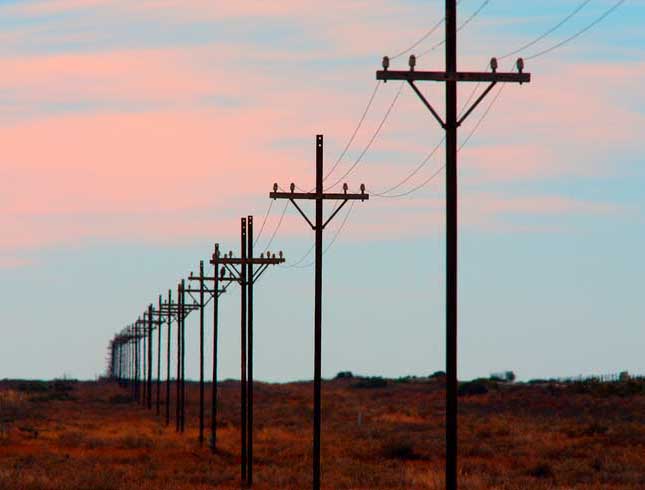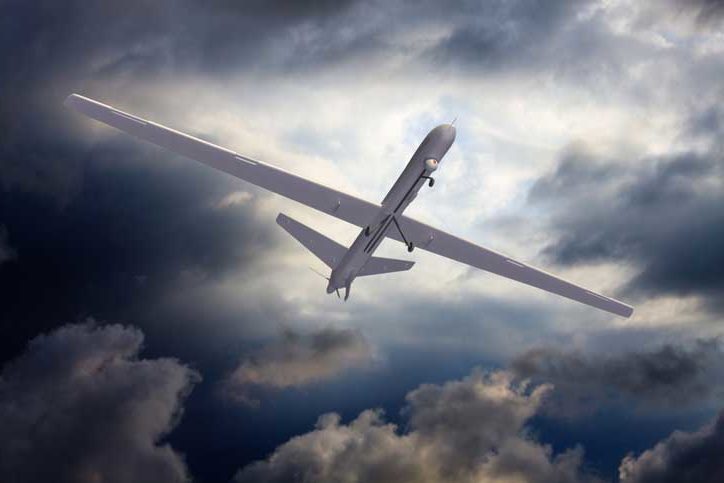Could “Twisted” Fiber Optics Create a 100 Times Faster Internet?
Leave a Comment Researchers at Australia’s RMIT University recently discovered a new fiber optic breakthrough that could lead to 100 times faster internet speeds. This new development detects light that has been twisted into a spiral.
Researchers at Australia’s RMIT University recently discovered a new fiber optic breakthrough that could lead to 100 times faster internet speeds. This new development detects light that has been twisted into a spiral.
According to research in Nature Communications, developers could upgrade existing fiber optic networks and boost efficiency using this discovery.
HOW IT WORKS
Fiber optic cables use pulses of light to transmit information. However, users can only store that data based on the color of the light and whether the light wave is horizontal or vertical.
The RMIT researchers twisted light into a spiral and created a third dimension for light to carry information – the level of orbital angular momentum, or spin. Dr. Min Gu of RMIT compared it to the double helix spiral of DNA. According to Dr. Gu, a greater amount of angular momentum allows an optical fiber to carry a larger amount of information.
Researchers have used “twisted light” approaches and orbital angular momentum before. They encoded a greater amount of data in various degrees of twist using these “twisted” methods. In fact, researchers at Boston University and the University of Southern California developed an optic fiber that could twist light. However, the teams used detectors as large as “the size of a dining table.” The RMIT researchers created a reasonably-sized detector that reads the information it holds. The new detector is the width of a human hair.
WHAT IT CAN DO
Providers could upgrade long haul networks around the globe with this new fiber optic technology. These companies include the NBN Co. NBN is deploying Australia’s national broadband network. The company expects to complete this network by 2020.
NBN is “prepared for future demand.” However, they have also stated that fiber optic advances such as this one by RMIT need further testing and acceptance before being deployed. A spokesperson commented, “Laboratories continually test new communications technologies for many years before they are commercialized. Equipment manufacturers and network operators must accept these new methods on a widespread scale before they are ready to be deployed in the field.”
Could Fiber Optic Sensors Help Prevent Power Theft?
Leave a Comment Fiber optic sensors could one day catch thieves who steal electricity and materials from overhead power lines. The UK firm Bandweaver recently demonstrated a distributed acoustic sensing (DAS) system that detects invasion and interruption on power lines. The system does this by using back-scattering effects along an optical fiber.
Fiber optic sensors could one day catch thieves who steal electricity and materials from overhead power lines. The UK firm Bandweaver recently demonstrated a distributed acoustic sensing (DAS) system that detects invasion and interruption on power lines. The system does this by using back-scattering effects along an optical fiber.
The Cost of Tampering
A major global problem is tampering and theft from power lines. In fact, this activity costs the electric industry an estimated $96 billion a year. Tampering can also interrupt power supplies and lead to operating losses for power companies and national grids.
Detecting and identifying theft when it first happens is the key to solving this problem. The power industry generally sees current solutions as time consuming, inefficient and expensive.
The Demonstration
Working with Dominican Republic power company ELESUR and an infrastructure firm, Bandweaver installed its system at an ELESUR sub-station in Santo Domingo. The team hoped to show how the photonics technology could locate and identify any tampering with overhead lighting and distribution poles connected to a fiber optic cable. They believed that by continually watching just one optical fiber, the system could monitor the entire route for real-time threats 24/7 using existing fiber optic cables.
The team installed the system and waited. When power company employees created different types of disturbances at random power line locations, the DAS system detected and located each problem.
Conclusion
Bandweaver believes that the demonstration’s success proved the ability of its system. The DAS system identified the exact location of each incident and then sent specific information to security systems and alerted company staff.
Possibly the greatest value of the system is that it alerted the power company when a threat began. This “heads up” notification could help companies act before major damage is done. And this capability could help to reduce costs and improve system operations.
New Fiber Optic Gyroscope: More Precise, Smaller than a Grain of Rice
Leave a Comment Engineers at the California Institute of Technology have created the world’s smallest fiber optic gyroscope to aid in navigational sensing. Five hundred times smaller than a regular gyroscope, this new gyro can fit on a grain of rice. This research breakthrough could lead to more accurate fiber optic gyros compared to mechanical units.
Engineers at the California Institute of Technology have created the world’s smallest fiber optic gyroscope to aid in navigational sensing. Five hundred times smaller than a regular gyroscope, this new gyro can fit on a grain of rice. This research breakthrough could lead to more accurate fiber optic gyros compared to mechanical units.
WHAT OPTICAL GYROS DO
Advanced fiber optic navigation technology is critical for aircraft, missiles, unmanned aerial vehicles and ground vehicles. These machines and other platforms depend on fiber optic gyroscopes to operate safely.
HOW THEY DO THEY WORK?
A fiber optic gyroscope detects changes in position or direction using the Sagnac effect. In this way, an optical gyro functions similarly to a mechanical gyro. However, the optical gyro operates by using light passing through a coil of optical fiber.
Inside a typical optical gyroscope, a spooled-up optical fiber carries pulses of laser light. Some pulses move clockwise and others go counterclockwise. The gyro measures rotation by detecting tiny changes in how these pulses arrive at a sensor. Researchers have tried to create smaller optical gyros. However, as the size of the gyro shrinks, the signals from its sensor have grown weaker until they are drowned out by “noise” from scattered light.
WHAT THE TEAM DID
The Cal Tech research team designed a low-noise, photonic gyroscope. They etched light-guiding channels onto a two-square-millimeter silicon chip. These channels guide the light in each direction around a separate circle. This layout keeps scattered light from confusing the device’s sensors. The new design also reverses the light’s direction from time to time. This change helps to cancel out much of the related “noise.”
Optical gyroscopes that use the Sagnac effect to measure rotation could eventually be miniaturized onto nano-photonic platforms. However, thermal fluctuations, component drift and fabrication mismatch often limit the signal-to-noise ratio of these gyros. Because a microscale unit would have a weaker signal, researchers have not yet created an integrated nano-photonic fiber optic gyroscope.
![]() Download our Fiber Optic Gyroscope Application Brochure
Download our Fiber Optic Gyroscope Application Brochure
![]()
![]()
![]()
We also make aerial fiber optic cable for flight communication systems.
Melting Arctic Ice Could Mean Faster Internet for Some
Leave a Comment

The answer lies beneath the ocean. More than 745,000 miles of submarine cables featuring optical fiber make up most of the actual physical internet. These cables wind between and around continents, carrying almost all of our global internet communication.
Recently, the huge amount of data sent between connected smart devices has begun clogging this network of submarine cables, just as interstate highways become jammed with traffic. One way to deal with this massive data growth is to increase the bandwidth capacity of the physical internet. Another way is to create more direct transmission paths between continents.
Taking It Direct
A new project in Finland hopes to use this second method. The plan is to install a new fiber optic cable route across the Arctic Ocean – the only large water body that is really untouched by submarine cables. While melting sea ice raises tremendous concerns for the health of our planet, it presents an entirely new opportunity to install digital links on a straight course between continents.
For data from Asia to reach Europe, it must travel over thousands of cable miles around Asia, up through the Suez Canal and across the Mediterranean Sea into continental Europe. And while this occurs faster than the blink of an eye (about 253 milliseconds), researchers say that data and communication could travel 30 percent faster over a shorter, more direct cable route through the Arctic.
Faster Connections Are Key
Banks and financial trading groups eagerly await faster connections. Traders depend on powerful, low latency networks to buy and sell securities where milliseconds can affect profit and loss. However, big data would also benefit. Today, internet-connected devices outnumber people on the Earth by an almost 3 to 1 margin. And experts predict that internet traffic between Europe and Asia will triple in the next five years.
The Challenges
The deployment of this new cable would actually extend an existing cable route through Finland into Germany. And while a feasibility study by the Government of Finland calls the project a “win-win-win” for Europe, Russia and Asia, there are key areas of concern.
First, constructing this new cable route would cost nearly a billion Euros. Secondly, the icy Arctic terrain and harsh weather conditions would certainly present logistical challenges. And there are always issues involving security. However, a separate cable installation linking Tokyo and London by way of Alaska and Canada is already underway.
Our planet needs more almost supersonic connections. We can expect to see more efforts around the globe to reduce data “pile-ups” and speed the delivery of data and communication.

